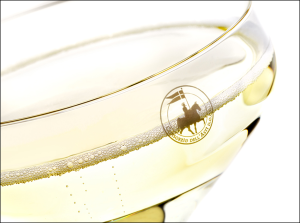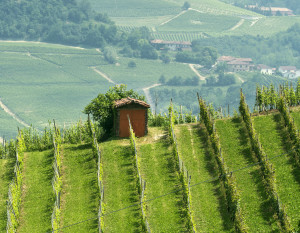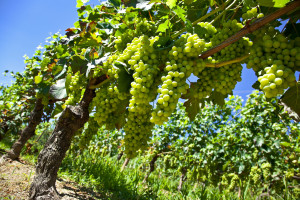Every wine lover—whether we admit it or not—has enjoyed a glass of Asti Spumante (which the wine cognoscenti will refer to simply as “Asti”) or Moscato d’Asti with lunch, brunch, or on New Year’s Eve.
It is predictable and quite correct—in most cases—to dismiss these sweet wines as “easy to love,” “great for beginners,” or “just a simple little quaff.” However, if we dig into the disciplinare of the Asti DOCG, we see that a range of wines are allowed to be produced under the designation—including wines from three sub-zones, late harvest wines, and bottle-fermented wines—all of which have probably never been referred to as “simple.” Add to these complications the fact that the rules of the DOCG were recently changed to allow the production of dry wines under the Asti DOCG—and we’ll see that perhaps we need to change our minds about Asti.
For starters in breaking down the wines of Asti, we can determine that all of the wines produced under the Asti DOCG (located in Piedmont, Italy) are sparkling or slightly so, and are, in all cases, produced using 100% Moscato Bianco (more commonly known [outside of Italy] as Muscat blanc à Petits Grains). That’s pretty must where the similarities end. The differences are discussed below, after a short discussion on sweetness.
How Sweet it is: There is no simple statement of required levels of sweetness for the various versions of Asti. The appellation’s disciplinare does, however, state a required level of alcolometrico volumico potenziale—potential alcohol volume (the abv that would be achieved if all of the fermentable sugar was allowed to convert to alcohol)—in other words, a required ripeness at harvest for each style of wine. In addition, there is a required level of alcolometrico volumico effettivo—the actual alcohol by volume stated for each wine. By doing a bit of math, we can determine the difference between each wine’s required potential alcohol and required actual alcohol —which (using more math) will reveal the approximate amount of sugar allowed or required to be in the finished wine. For the purposes of this discussion, we’ll use the following formula: Brix X 0.55 = Potential Alcohol (or, Potential Alcohol/.55 = Brix). Note: This calculation is at best a generality, but it is a good-enough starting point for a discussion on the character of these wines.
Asti DOCG: Asti DOCG is sometimes referred to as Asti Spumante; both terms are acceptable for use under the DOCG. Asti/Asti Spumante DOCG is produced via second fermentation in pressurized tanks (autoclaves) using the production method commonly referred to as the Charmat Method—known in Piedmont as the Metodo Marinotti. By EU definition, spumante means “sparkling” and as such, the minimum pressure of the dissolved bubbles of Asti is 3 atm. For these wines, the required minimum potential alcohol is 11.5%. Until recently, the required actual abv was 6.0% to 9.5%; a bit of math tells us that the (previsouly) required minimum residual sugar was around 3.6% (making these wines demi-sec or dolce [semi-sweet to sweet]). However…
New! Asti Secco: In August of 2017, the regulations were revised, and the maximum required actual alcohol (formerly 9.5%) was deleted. This means that Asti DOCG may now be produced in a dry style. The only change in the actual rules appears to be the deletion of the 9.5% maximum actual abv requirement, but the Asti DOCG Consortium is encouraging the use of the term “secco” for wines with a 11% minimum abv (actual), and the use of the term “dolce” for the traditional, sweet wines. (The revision in the disciplinare only applies to Asti/Asti Spumante DOCG and does not affect the wines described below.)
Asti Metodo Classico DOCG: These wines, which may also be referred to as Asti Spumante Metodo Classico DOCG, are required to be produced using the Traditional (bottle-fermented) Method of sparkling wine production and must be aged on the lees for a minimum of nine months. The required minimum sweetness (based on a required potential minimum alcohol of 12% and a required actual alcohol of 6% to 8%) is approximately 7% residual sugar and are therefore all of these wines are sweet (dolce).
Moscato d’Asti DOCG: This is the beloved, sweet sipper that has recently become so popular (although experienced wine lovers see this as a prime example of “everything old is new again” popularity). Moscato d’Asti is made using the “partial fermentation” method of sparkling wine production (also—somewhat obviously—also known as the “Asti method”). This means these wines are made by one pressurized fermentation (only) that is interrupted while there is just a bit of bubble (a maximum of 2 atm) built up in addition to a good deal of sweetness still left in the wine. The numbers of 11% minimum potential alcohol and 4.5% to 6.5% acquired alcohol means that these wines are always sweet with at least 8% residual sugar (to use generalized terms).
Moscato d’Asti Vendemmia Tardiva DOCG: This late-harvest version of Moscato d’Asti requires a minimum potential alcohol of 14% and a acquired alcohol of 11%, meaning these wines will have at least (approximately) 5% residual sugar. This wine is not allowed to be chaptalized and must be aged for at least one year from the date of harvest.
Sub-regions: As for the sub-regions of the Asti DOCG, they are only approved for a few of the wines and (of course) they have a few of their own requirements:
- Canelli: This sub-zone (located in the center section of the DOCG) is only approved for Moscato d’Asti, and the wines using this designation must have a potential alcohol of 12% abv (slightly higher than the general requirement of 11%).
- Santa Vittoira d’Alba: This sub-zone (located to the west of the central DOCG zone) is approved for Moscato d’Asti and Moscato d’Asti Vendemmia Tardiva. Moscato d’Asti Santa Vittoira d’Alba must have a potential alcohol of 12%. The vendemmia tardiva wines have quite a few unique requirements, including: a potential alcohol content of 15% and an actual minimum of 12% abv, a minimum aging of two years (beginning with January 1 of the year after the vintage year), and partial-drying of the grapes (post-harvest).
- Strevi: Like the Canelli sub-zone, Strevi (located on the eastern edge of the DOCG) is approved for Moscato d’Asti only, and the wines using this designation must have a potential alcohol of 12% abv (slightly higher than the general requirement of 11%).
Asti….like we said, so fun, fruity, simple, and (sometimes) sweet….and yet again, so complex.
References/for more information:
- http://www.astidocg.it/asti-secco/
- https://winemakermag.com/blogs/potential-alcohol-in-wine+
- https://www.guildsomm.com/
- https://italianwinecentral.com/
- Disciplinare Asti DOCG revised 2017




